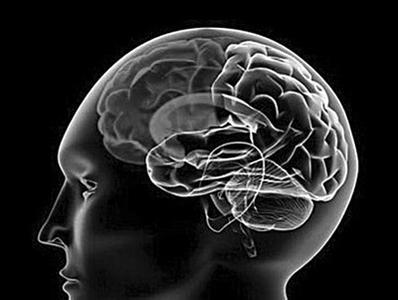(单词翻译:单击)
发表在《细胞》杂志上的一项最新研究表明,大脑的可塑性和对新环境的适应力并非如以前研究者们认为的那样。以前的理论都是基于动物实验研究,如今瑞典卡洛琳斯卡学院的研究者们真正研究了人脑。结果显示,人脑中的少突胶质细胞(一种支持细胞,在神经系统细胞信息传输中起重要作用)比老鼠脑中的要复杂得多,这可能是人脑可塑性更强的原因之一。

The learning process takes place partly by nerve cells creating new connections in the brain. Our nerve cells are therefore crucial for how we store new knowledge. But it is also important that nerve impulses travel at high speed and a special material called myelin plays a vital role. Myelin acts as an insulating layer around nerve fibres, the axons, and large quantities of myelin speed up the nerve impulses and improve function. When we learn something new, myelin production increases in the part of the brain where learning occurs. This interplay, where the brain's development is shaped by the demands that are imposed on it, is what we know today as the brain's plasticity.
学习过程其实正是大脑神经细胞创建新连接的过程。因此,神经细胞对于我们存储新知识来说是至关重要的。但是,神经冲动高速传播着,一种叫做髓磷脂的物质也是举足轻重的。髓磷脂类似于附着在神经纤维和神经突出上的绝缘层,大量的髓磷脂可使得神经冲动加速并改善其功能。当我们学到了新知识时,大脑相应部位的髓磷脂就会增加。脑力的开发受施加其上的压力的影响。这种相互作用正式我们今天所讨论的话题——大脑的可塑性。
Myelin is made by cells known as oligodendrocytes. In the last few years, there has been significant interest in oligodendrocytes and numerous studies have been conducted on mice and rats. These studies have shown that when the nerve cells of laboratory animals need more myelin, the oligodendrocytes are replaced. This is why researchers have assumed that the same also applies in humans. Researchers at Karolinska Institutet and their international collaborators have shown that this is not the case. In humans, oligodendrocyte generation is very low but despite this, myelin production can be modulated and increased if necessary. In other words, the human brain appears to have a preparedness for it, while in mice and rats, increased myelin production relies on the generation of new oligodendrocytes.
髓磷脂是少突胶质细胞的产物。过去几年,研究者们对它很感兴趣,在老鼠身上做了大量实验。这些实验表明,当实验对象的神经细胞需要更多的髓磷脂时,少突胶质细胞就开始了制作过程。基于此研究,研究者假定这现象同样发生在人脑中。卡洛琳斯卡学院的研究者及其国际合作伙伴发现事实并非如此。人脑中的少突胶质细胞是非常少的,尽管如此,必要时,它还是会生产并调节髓磷脂含量。换句话说,人脑似乎事先早有准备,而老鼠大脑中的髓磷脂的增加依赖少突胶质细胞的更新换代。
In the study in question, researchers have studied the brains of 55 deceased people in the age range from under 1 to 92 years. They were able to establish that at birth most oligodendrocytes are immature. They subsequently mature at a rapid rate until the age of five, when most reach maturity. After this, the turnover rate is very low. Only one in 300 oligodendrocytes are replaced per year, which means that we keep most of these cells our whole lives. This was apparent when the researchers carbon-dated the deceased people's cells. The levels of carbon-14 isotopes rose sharply in the atmosphere after the nuclear weapons tests during the Cold War, and they provided a date mark in the cells. By studying carbon-14 levels in the oligodendrocytes, researchers have been able to determine their age.
在该研究中,科学家们研究了1岁至92岁的55位死者的大脑。他们断言,新生婴儿大脑中的少突胶质细胞都是不成熟的,随后这些细胞迅速生长,在5岁之前大部分成熟了。接下来,它们更新换代的速度很慢。300个少突胶质细胞中每年只有1个更新,这意味着大多数的细胞会伴随我们终生。研究者们观察死者脑细胞时发现这是显而易见的。冷战期间由于核武器实验,大气中的C-14含量迅猛增长。通过研究少突胶质细胞中的-14含量,科学家们可确定死者年龄。
"We were surprised by this discovery. In humans, the existing oligodendrocytes modulate their myelin production, instead of replacing the cells as in mice. It is probably what enables us to adapt and learn faster. Production of myelin is vital in several neurological diseases such as MS. We now have new basic knowledge to build upon," says Jonas Frisén, PhD, Professor of Stem Cell Research at the Department of Cell and Molecular Biology at Karolinska Institutet.
“对于这个发现,我们也很惊讶。少突胶质细胞在人脑中可调节髓磷脂含量,而不像在鼠脑中那样迅速更新换代。这也许正是我们适应新环境、学习新知识更快的原因。髓磷脂的产生对于治疗像MS这样的神经疾病是至关重要的。现在我们的研究更进了一步。” 卡洛琳斯卡学院细胞和分子生物学系的教授乔纳斯说道。


